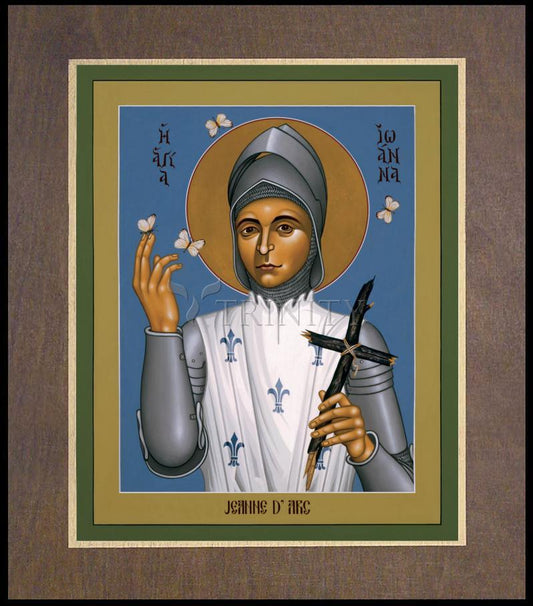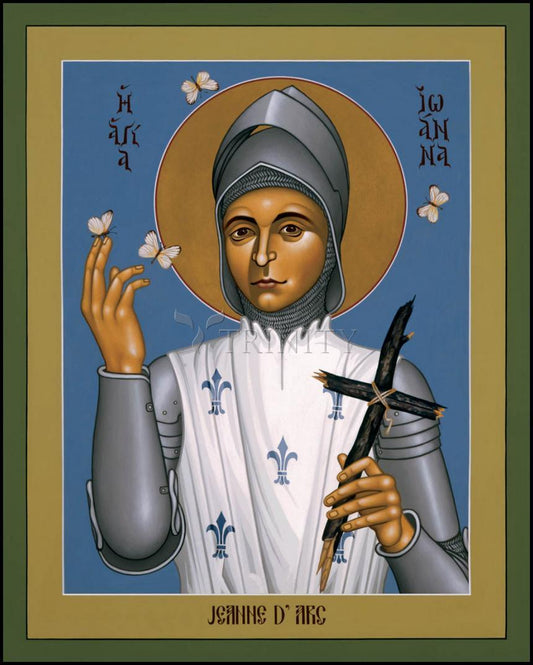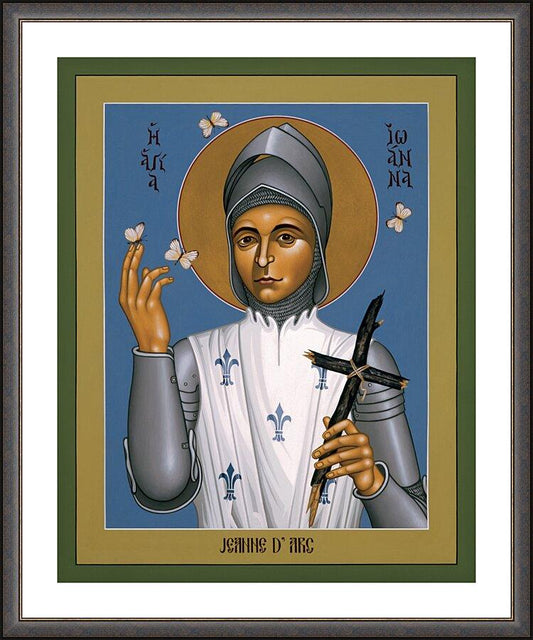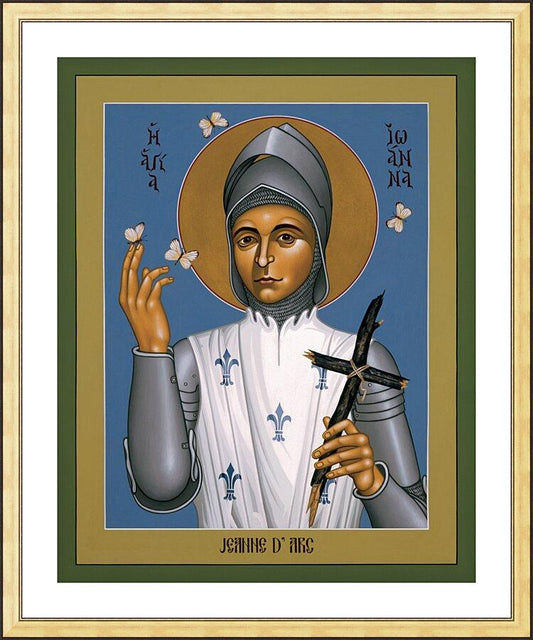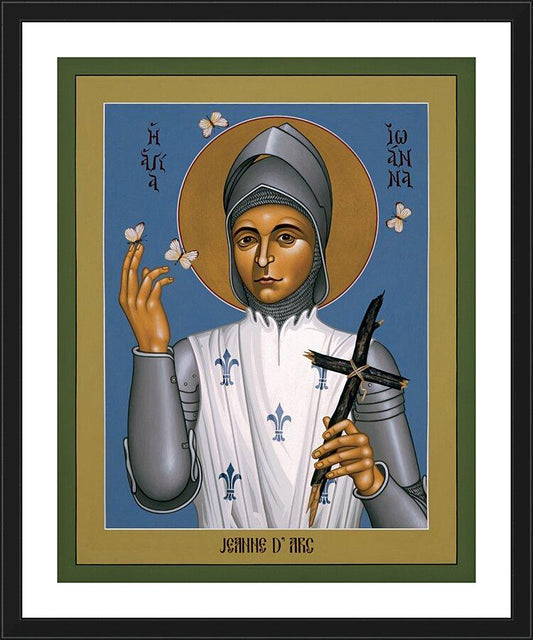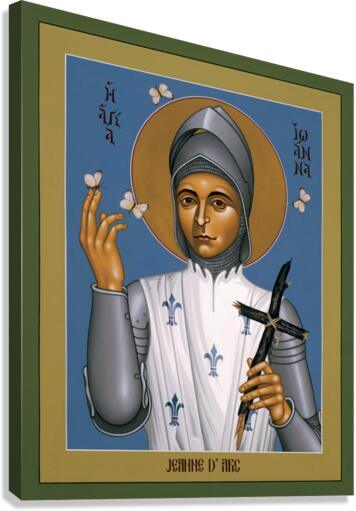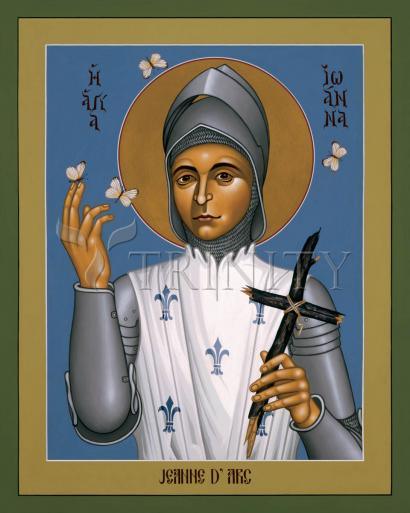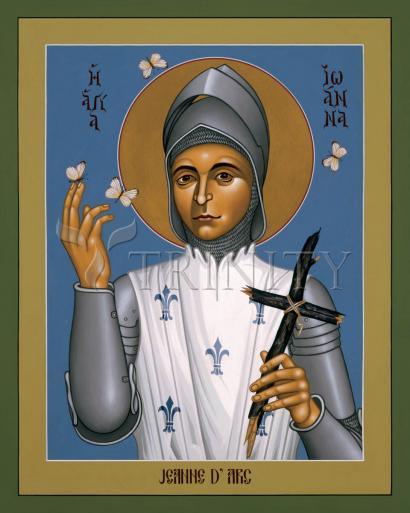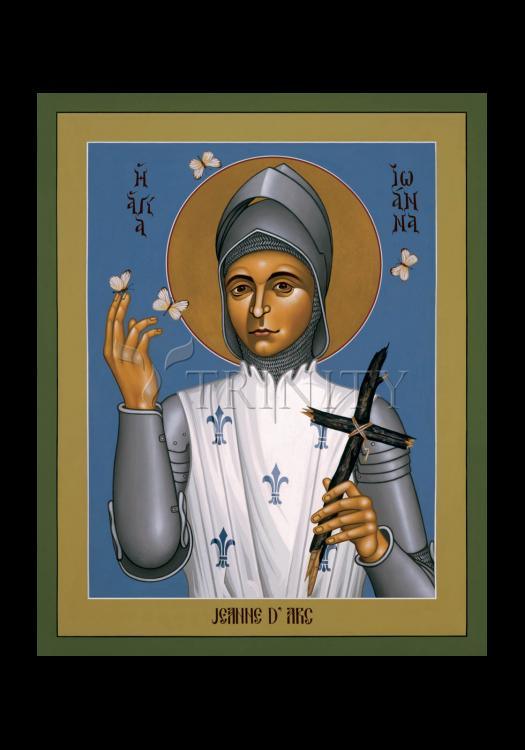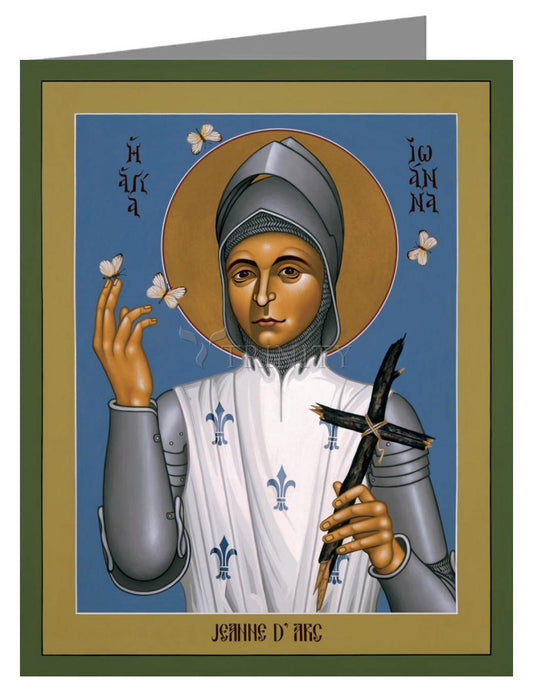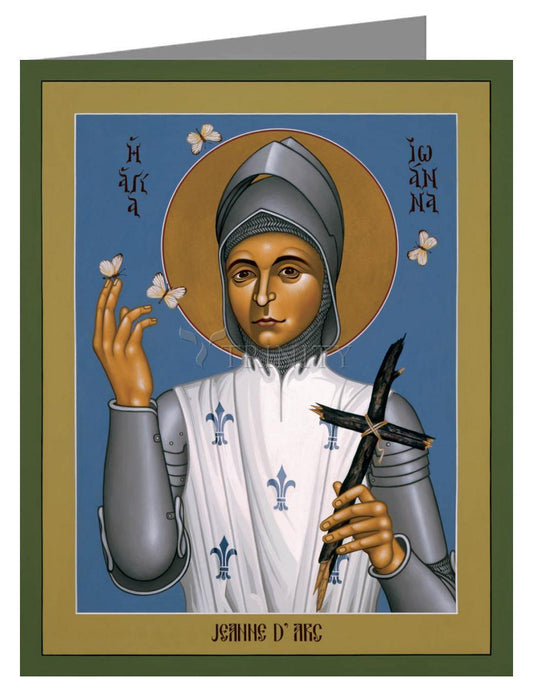Saint Joan of Arc, byname the Maid of Orléans, French Sainte Jeanne d'Arc or La Pucelle d'Orléans (born c. 1412, Domrémy, Bar, France"died May 30, 1431, Rouen; canonized May 16, 1920; feast day May 30; French national holiday, second Sunday in May), national heroine of France, a peasant girl who, believing that she was acting under divine guidance, led the French army in a momentous victory at Orléans that repulsed an English attempt to conquer France during the Hundred Years' War. Captured a year afterward, Joan was burned by the English and their French collaborators as a heretic. She became the greatest national heroine of her compatriots. Her achievement was a decisive factor in the later awakening of French national consciousness.
Joan was the daughter of a tenant farmer at Domrémy, on the borders of the duchies of Bar and Lorraine. In her mission of expelling the English and their Burgundian allies from the Valois kingdom of France, she felt herself to be guided by the "voices" of St. Michael, St. Catherine, and St. Margaret. She possessed many attributes characteristic of the female visionaries who were a noted feature of her time. These qualities included extreme personal piety, a claim to direct communication with the saints, and a consequent reliance upon individual experience of God's presence beyond the ministrations of the priesthood and the confines of the institutional church. But to these were added remarkable mental and physical courage, as well as a robust common sense. Known as La Pucelle, or the Maid of Orléans, Joan became in the following centuries a focus of unity for the French people, especially at times of crisis.
Joan's mission
The crown of France at the time was in dispute between the dauphin Charles (later Charles VII), son and heir of the Valois king Charles VI, and the Lancastrian English king Henry VI. Henry's armies were in alliance with those of Philip the Good, duke of Burgundy (whose father, John the Fearless, had been assassinated in 1419 by partisans of the Dauphin), and were occupying much of the northern part of the kingdom. The apparent hopelessness of the Dauphin's cause at the end of 1427 was increased by the fact that, five years after his father's death, he still had not been crowned. Reims, the traditional place for the investiture of French kings, was well within the territory held by his enemies. As long as the Dauphin remained unconsecrated, the rightfulness of his claim to be king of France was open to challenge.
Joan's village of Domrémy was on the frontier between the France of the Anglo-Burgundians and that of the Dauphin. The villagers had already had to abandon their homes before Burgundian threats. Led by her voices, Joan traveled in May 1428 from Domrémy to Vaucouleurs, the nearest stronghold still loyal to the Dauphin, where she asked the captain of the garrison, Robert de Baudricourt, for permission to join the Dauphin. He did not take the 16-year-old girl and her visions seriously, and she returned home. Joan went to Vaucouleurs again in January 1429. This time her quiet firmness and piety gained her the respect of the people; and the captain, persuaded that she was neither a witch nor feebleminded, allowed her to go to the Dauphin at Chinon. She left Vaucouleurs about February 13, dressed in men's clothes and accompanied by six men-at-arms. Crossing territory held by the enemy, and traveling for 11 days, she reached Chinon.
Joan went at once to the castle occupied by the dauphin Charles. He was uncertain whether to receive her, and his counselors gave him conflicting advice; but two days later he granted her an audience. Charles had hidden himself among his courtiers, but Joan made straight for him and told him that she wished to go to battle against the English and that she would have him crowned at Reims. On the Dauphin's orders she was immediately interrogated by ecclesiastical authorities in the presence of Jean, duc d'Alençon, a relative of Charles, who showed himself well-disposed toward her. For three weeks she was further questioned at Poitiers by eminent theologians who were allied to the Dauphin's cause. These examinations, the record of which has not survived, were occasioned by the ever-present fear of heresy following the end of the Great Schism in 1417. Joan told the ecclesiastics that it was not at Poitiers but at Orléans that she would give proof of her mission; and forthwith, on March 22, she dictated letters of defiance to the English. In their report the churchmen suggested that in view of the desperate situation of Orléans, which had been under English siege for months, the Dauphin would be well-advised to make use of her.
Joan returned to Chinon. At Tours, during April, the Dauphin provided her with a military household of several men; Jean d'Aulon became her squire, and she was joined by her brothers Jean and Pierre. She had her standard painted with an image of Christ in Judgment and a banner made bearing the name of Jesus. When the question of a sword was brought up, she declared that it would be found in the church of Sainte-Catherine-de-Fierbois, and one was in fact discovered there.
Action at Orléans
Troops numbering several hundred men were mustered at Blois, and on April 27 they set out for Orléans. The city, besieged since Oct. 12, 1428, was almost totally surrounded by a ring of English strongholds. When Joan and one of the French commanders, La Hire, entered with supplies on April 29, she was told that action must be deferred until further reinforcements could be brought in.
On the evening of May 4, when Joan was resting, she suddenly sprang up, apparently inspired, and announced that she must go and attack the English. Having herself armed, she hurried out to the east of the city toward an English fort where, indeed, an engagement of which she had not been told was taking place. Her arrival roused the French, and they took the fort. The next day Joan addressed another of her letters of defiance to the English. On the morning of May 6 she crossed to the south bank of the river and advanced toward another fort; the English immediately evacuated it in order to defend a stronger position nearby, but Joan and La Hire attacked them there and took it by storm. Very early on May 7 the French advanced against the fort of Les Tourelles. Joan was wounded but quickly returned to the fight, and it was thanks in part to her example that the French commanders maintained the attack until the English capitulated. Next day the English were seen to be retreating, but, because it was a Sunday, Joan refused to allow any pursuit.
Born: January 6, 1412 at Greux-Domremy, Lorraine, France
Died: Burned alive on May 30, 1431 at Rouen, France
Beatified: April 11, 1905 by Pope Saint Pius X
Canonized: May 16, 1920 by Pope Benedict XV
Name Meaning: God is gracious



